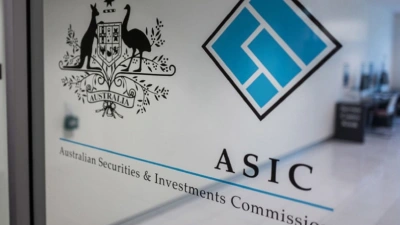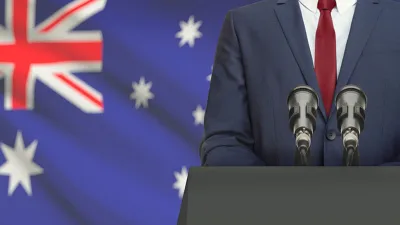House prices: betting on the bubble


Ten months after he climbed Mount Kosciuszko as part of a losing bet, Steve Keen is still adamant that house prices are on the way down. Ashleigh McIntyre reports.
Walking 235 kilometres from Canberra to the peak of Mount Kosciuszko for a bet may seem a bit over the top. Walking that distance when the bet was not technically over seems ridiculous. But that’s just what economist Steve Keen did, all while wearing a shirt that said: ‘I was hopelessly wrong on house prices.’
The much-publicised debate between Keen and Macquarie Bank interest rates strategist Rory Robertson in November 2008 saw Keen predict house prices to fall 40 per cent. But according to Keen, what wasn’t taken into account was the timeframe he gave: 10 to 15 years.
“I knew I couldn’t shut Rory up. He redefined the bet to be over as soon as house prices passed the previous peak, ignoring the fact that the Government bubble had caused the price to rise in the first place. So the only way to shut him up was to do it,” Keen said.
The walk may be over now, but the debate is still simmering, this time with the founder of real estate funds manager Rismark International, Christopher Joye, in the property bull corner.
When the pair went head-to-head early last year on the future of housing prices, Keen stuck to his prediction of a 20 per cent drop by 2013 and 40 per cent by 2018 to 2023.
Joye, on the other hand, predicted that over 2010 house prices would grow by 4 to 5 per cent, but the market would experience a soft landing in the middle of the year.
Although Joye’s forecast came to be, there is still much time before Keen’s predictions meet their deadline — and he continues to stick to his guns.
In fact, Keen predicts that over the next year, housing prices will fall in percentages around the “high-singles or early doubles” thanks to the unsustainable level of debt Australians are in.
“My stance has always been that house prices were driven as high as they are not by the alleged stresses of population and lack of house building — which is what the spruikers normally argue — but by excessive levels of lending by the banking sector that’s gotten addicted to a Ponzi scheme,” Keen said.
“Banks should be making money by lending to finance businesses, but what they have actually found they can do is [make more money] by financing people to speculate on property.”
He gives the example that in the 1960s, banks would lend a customer 70 per cent of their house price. Now it is commonplace for banks to lend 97 per cent. This change in loan valuation is what Keen believes has driven up house prices around the world.
According to Keen, we are now starting to see the first signs of a housing market in crisis: “What tends to happen when a housing market starts to fall over is there’s an increase in the volume of unsold properties. That’s starting to happen now, there’s a substantial overhang starting to develop.”
If the bubble were to burst, Keen thinks prices have been exacerbated by the Government’s First Home Owners scheme, which he said boosted house prices by 20 per cent over its duration.
“That therefore makes house prices 20 per cent higher than they would have been to fall from,” he said.
“And when speculative bubbles burst, they don’t slowly deflate. I see that happening this year, and I can’t see the Government doing anything to stop it. They can’t bring in another First Home Owners scheme as they’ve already stolen all the first home owners they can in 2008 and 2009,” he said.
While Keen predicts the end of the property boom as we know it, Joye maintains that despite low capital growth for 2011, the valuation of Australian houses in the medium to long term looks largely positive.
“Australia’s national house price to disposable income ratio is estimated by Rismark to have peaked at 4.7 times at the start of 2010. It has fallen since then to 4.4 times and we expect it to continue to taper,” he said.
“There is little doubt that as national incomes grow between 7 and 9 per cent, while house prices have little to no growth, we will experience quite a striking improvement in the valuation of the asset class.
“Over the long run, our model suggests that national house prices should track disposable incomes as they have done, generally speaking, over the last 20 years.”
Countering Keen’s predictions of doom, Joye cites the UK as a country with a similar housing market to Australia.
According to Joye, when the UK was hit by a recession, a private banking system collapse and record-high unemployment, the peak-to-trough fall of house prices was 13.6 per cent.
Joye believes that should the worst happen in Australia, we could expect to come out much better thanks to more conservative lending practices and a much lower mortgage default rate, which would disprove Keen’s 40 per cent theory.
But only time will tell if the market continues to experience growing house prices, or suffers the consequences of a burst property bubble.
Recommended for you
The month of April enjoyed four back-to-back weeks of growth in financial adviser numbers, with this past week seeing a net rise of five.
ASIC has permanently banned a former Perth adviser after he made “materially misleading” statements to induce investors.
The Financial Services and Credit Panel has made a written order to a relevant provider after it gave advice regarding non-concessional contributions.
With the election taking place on Saturday (3 May), Adviser Ratings examines how the two major parties could shape the advice industry in the future.














